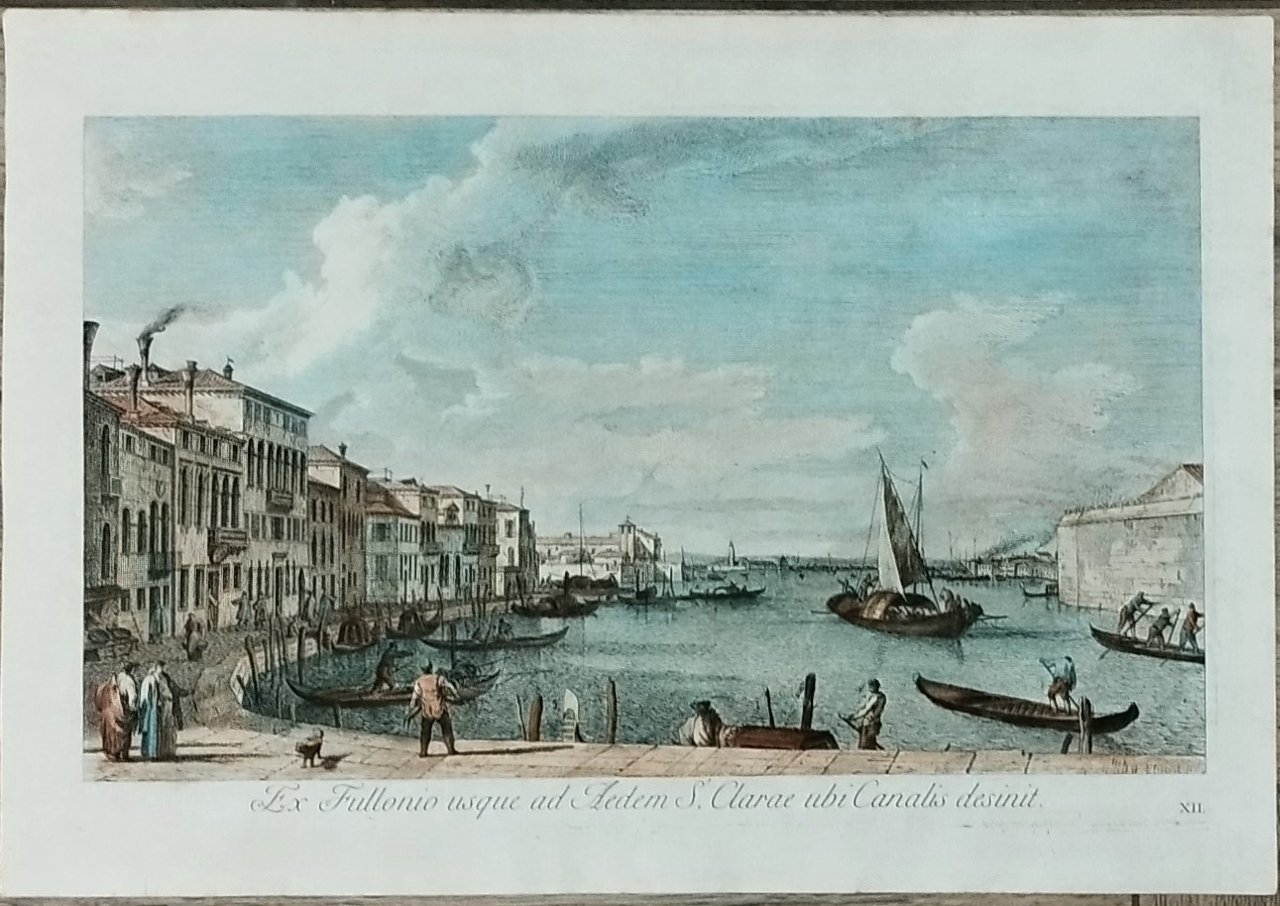Detalles
Editor
Venetiis: Apud Joannem Baptistam Pasquali, 1742
Grabadores
Visentini Antonio, Canal Antonio
Descripción
Incisione all'acquaforte in delicata coloritura di 432 x 273 mm. alla battuta su foglio di carta vergatina veneziana di 479 x 334 mm. Filigrana "Z". II stato su IV. Tiratura Pasquali. In basso al centro "Ex Fullonio usque ad Aedem S. Clarae ubi Canalis desinit" e sulla destra "XII" in numero romano. Ottimo foglio a larghi margini. Incisione tratta dal più che celebre album inciso da Antonio Visentini dai disegni di Canaletto "Urbis Venetiarum Prospectus Celebriores, ex Antonii Canal Tabulis XXXVIII. Aere expressi ab Antonio Visentini. In partes tres distributi". Succi 2013 "La tavola rappresenta uno dei punti panoramici più suggestivi di Venezia nel Settecento, quando la vista poteva spaziare sul Canal Grande e sulla laguna interna, in un contesto architettonico e ambientale intatti. L'acquaforte fu una delle prime intagliate da Visentini (1729 ca), come dimostrano i notevoli ritocchi apportati nel secondo stato. Il dipinto di Canaletto a Windsor Castle, databile al 1726-27, fu molto probabilmente il primo della serie di vedute commissionate da Smith." Moschini "Dell'Incisione in Venezia" - Pallucchini "Mostra degli Incisori Veneti del 700" - Morazzoni "Il libro illustrato veneziano del 700" - Succi "Prospettive di Venezia" e " Da Carlevaijs a Tiepolo" - Montecuccoli degli Erri "Canaletto incisore". (EN) Etching in delicate coloring measuring 432 x 273 mm. at the bottom on a sheet of Venetian laid paper measuring 479 x 334 mm. "Z" watermark. II state on IV. Pasquali edition. At the bottom center "Ex Fullonio usque ad Aedem S. Clarae ubi Canalis desinit" and on the right "XII" in Roman numeral. Excellent sheet with wide margins. Engraving taken from the more than famous album engraved by Antonio Visentini from Canaletto's drawings "Urbis Venetiarum Prospectus Celebriores, ex Antonii Canal Tabulis XXXVIII. Aere expressi ab Antonio Visentini. In partes tres distributi". Succi 2013 "The panel represents one of the most evocative panoramic points of Venice in the eighteenth century, when the view could sweep over the Grand Canal and the internal lagoon, in an intact architectural and environmental context. The etching was one of the first engraved by Visentini (1729 ca), as demonstrated by the considerable retouching made in the second state. Canaletto's painting at Windsor Castle, datable to 1726-27, was most likely the first of the series of views commissioned by Smith." Moschini "Dell'Incisione in Venezia. " - Pallucchini "Mostra degli Incisori Veneti del 700" - Morazzoni "Il libro illustrato veneziano del 700" - Succi "Prospettive di Venezia" and "Da Carlevaijs to Tiepolo" - Montecuccoli degli Erri "Canaletto incisore".

Descubre cómo utilizar
Descubre cómo utilizar

